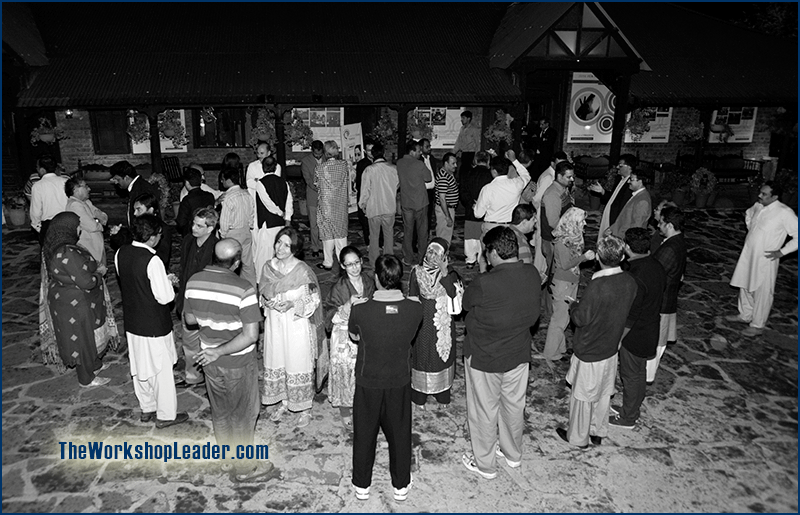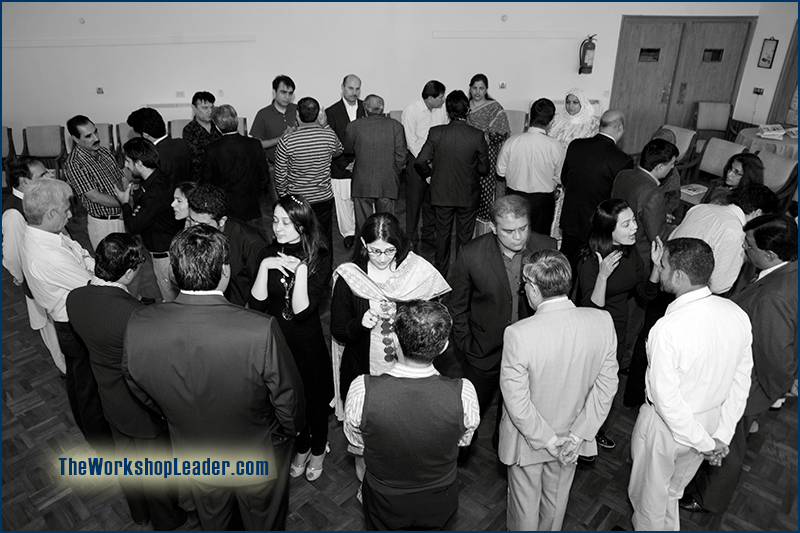There can be no settlement of a great cause without discussion, and people will not discuss a cause until their attention is drawn to it.
William Jennings Bryan (1860–1925)
American Lawyer
This moderation technique, invented by the German pedagogue Heinz Klippert (*1948), is a good warm-up for free speech but could also be used for as an icebreaker. As the name suggests, it functions like a ball bearing.
Objectives
Ball bearing can be applied for speed-dating or better speed-networking. Thereby, people get to know a maximum of people in a very short time.
You can also use it for any kind of group facilitation, in which participants are asked to discuss with each other a certain topic. This is often the case in icebreakers in pairs like Newspaper Interview or Wanted Poster. But also for listening exercises like Marshall Rosenberg’s Non-violent Communication or Rounds of Feedback or an Intimate Appreciation Circle are possible.
Procedure
The trainer divides the group into equal halves. One half stands in the inner circle, the other in the outer. Both circles face each other. When a signal is given, the outer circle asks and discusses a given topic with the person they are facing for two minutes. You can suggest that a person thus can speak one minute each (they won’t pay attention, but at least keep in mind that they should led also the other person talk as the time is short). You can also regulate who speaks: When the time is up, the inner group asks and discusses their topic. However, usually you just let it run and preferably ring a bell when it’s time to rotate.
For the next round the moderator tells everyone to rotate — for example: Rotate clockwise by three persons. (I rather recommend to rotate only by one. To count to three sounds easy, but in reality this might be confusing.) You repeat the procedure after exactly the same time (otherwise you will have complaints about fairness).
You can generally repeat this four to ten times without participants losing concentration. If you do more rounds, participants will be too exhausted.
Outdoor Ball bearing
Being outdoor is a big advantage: Usually you have enough space, which is hard to find indoors. Furthermore, it’s a change from sitting in a workshop because you walk, stand, and breathe fresh air.
However, you depend on the weather. And the location matters. Noise from a nearby street or airport, unrest because of the parking lot etc. can distract and disturb the process. So, observe these possible sources of spoilers before you go ahead.
Indoor Ball bearing
For the indoor ball bearing it’s not only good to have a sufficiently large room, but that the room acoustics are suitable. That means better no tiles and blank walls, but rather carpets and wallpaper. Otherwise the echo and sound reflections might turn it in such an overwhelming noise that participants can’t listen to each other even if only 50 cm away. And think also of a bell which is loud enough to intercept the communication.



